Understanding that there will be a segment of the market looking for a more progressive bike than the new Stumpjumper, Specialized has also released the Stumpjumper EVO.
In short — or long, I guess — the Stumpjumper EVO is a supersized version of the bike, with a far longer reach, a slacker head angle and a much lower BB than the regular model.
- Specialized Stumpjumper first ride review
- Specialized Stumpjumper — range overview, design notes and details
Somewhat unusually, the Stumpjumper EVO is available in sizes S2 and S3, rather than the usual small through extra large sizes. Think of these sizes as ‘long’ and ‘longer'.
Shorter riders will be better served by the S2 bike and larger riders the S3. Those who sit in between - the majority of riders - will be able to choose between the two depending on tastes in geometry and ride characteristics.
How does the EVO compare to the regular Stumpjumper?
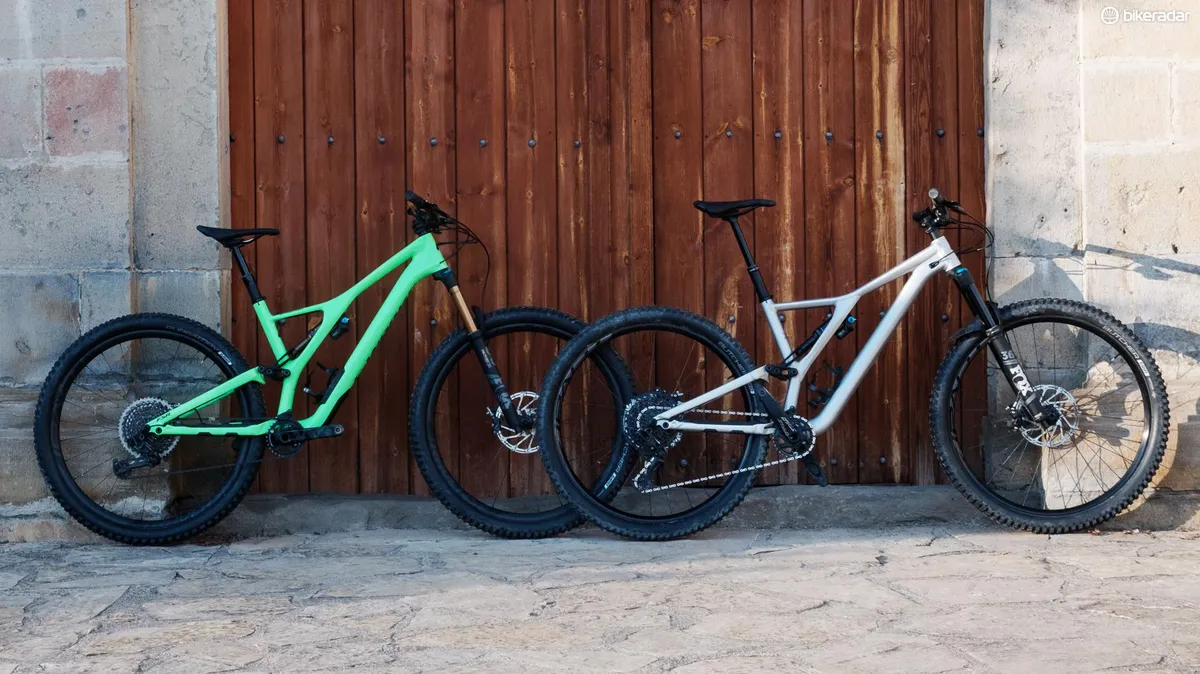
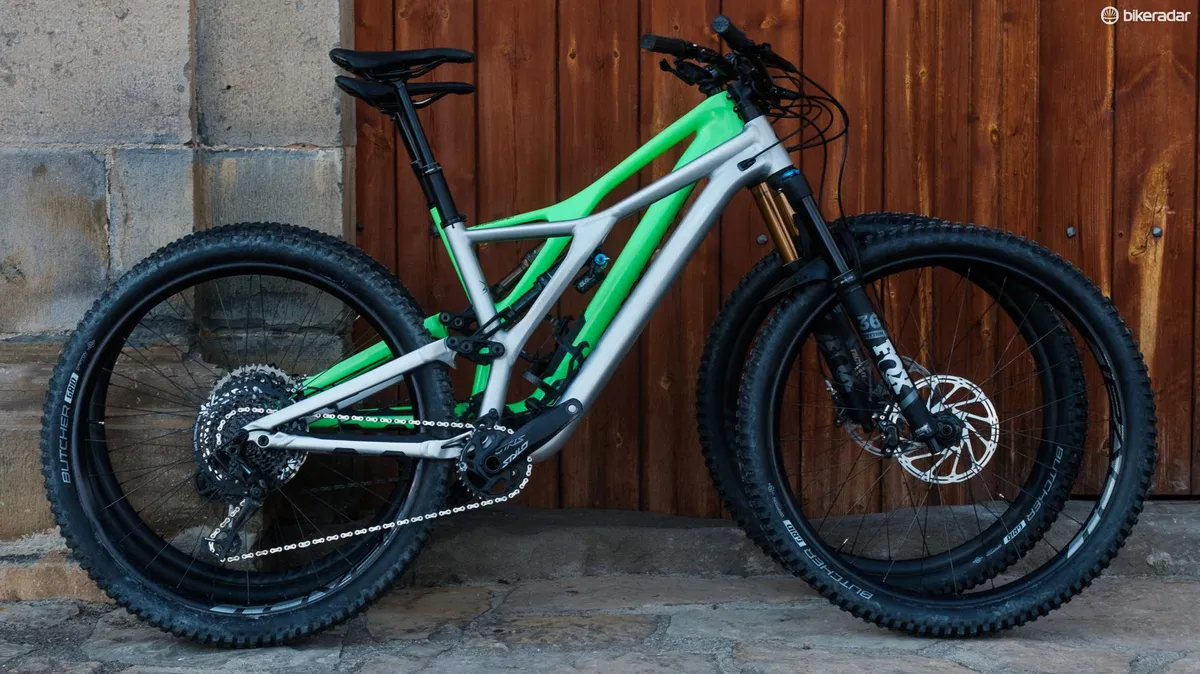
These images give a rough idea of how the overall shapes of the bikes compare. For reference, the green S-Works Stumpjumper is a 29” long travel version in a size large and the EVO is a 29” S3 sized model.
A closer look at the key geometry stats can be seen below. To keep things easy, I have only included the geometry of the pictured size large S-Works Stumpjumper.
Array
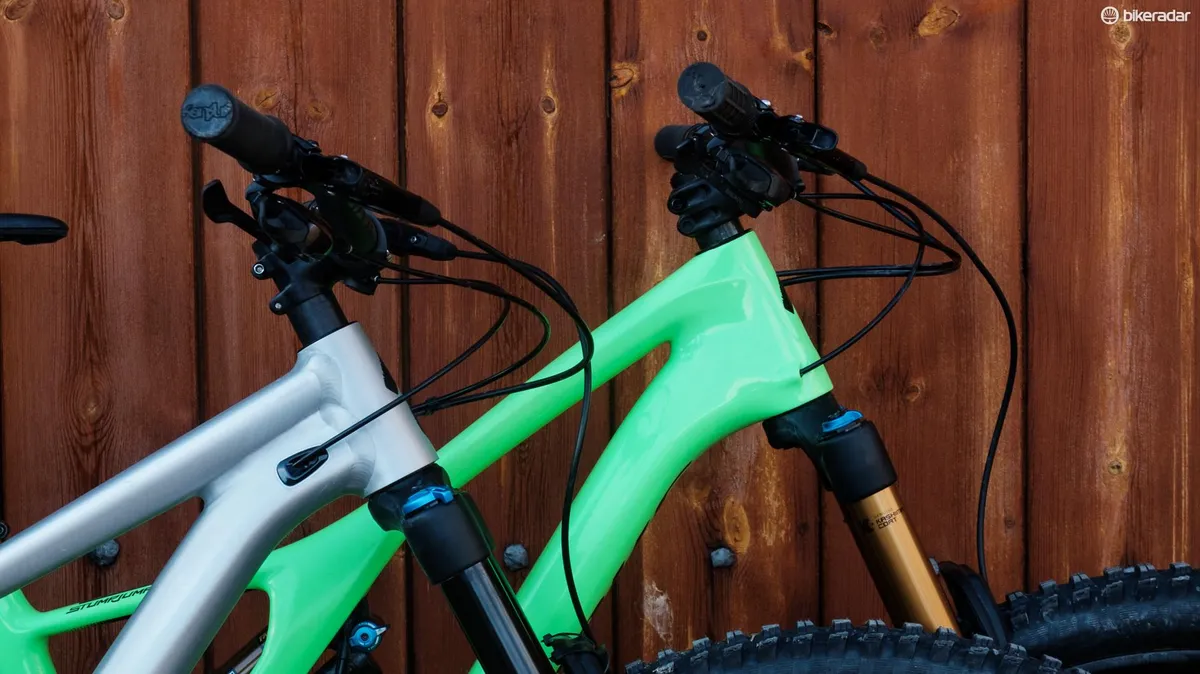
As is clear from the almost-downhill-slack head angle (63.5 degrees), the low bottom bracket and long reach, the Stumpjumper EVO is built for harder riding and bigger terrain than the Stumpjumper.
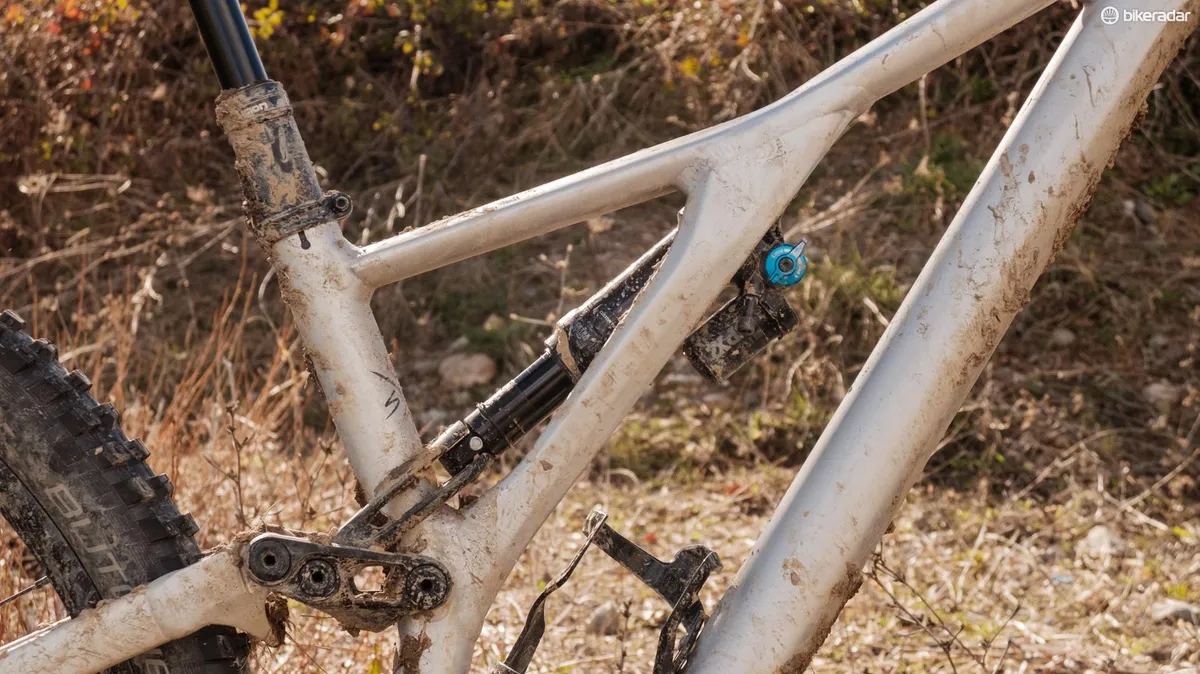
Design wise, the bike shares much with the Stumpjumper, including the asymmetrical supporting strut between the top tube and seat tube, the fancy internal cable routing and the threaded bottom bracket.
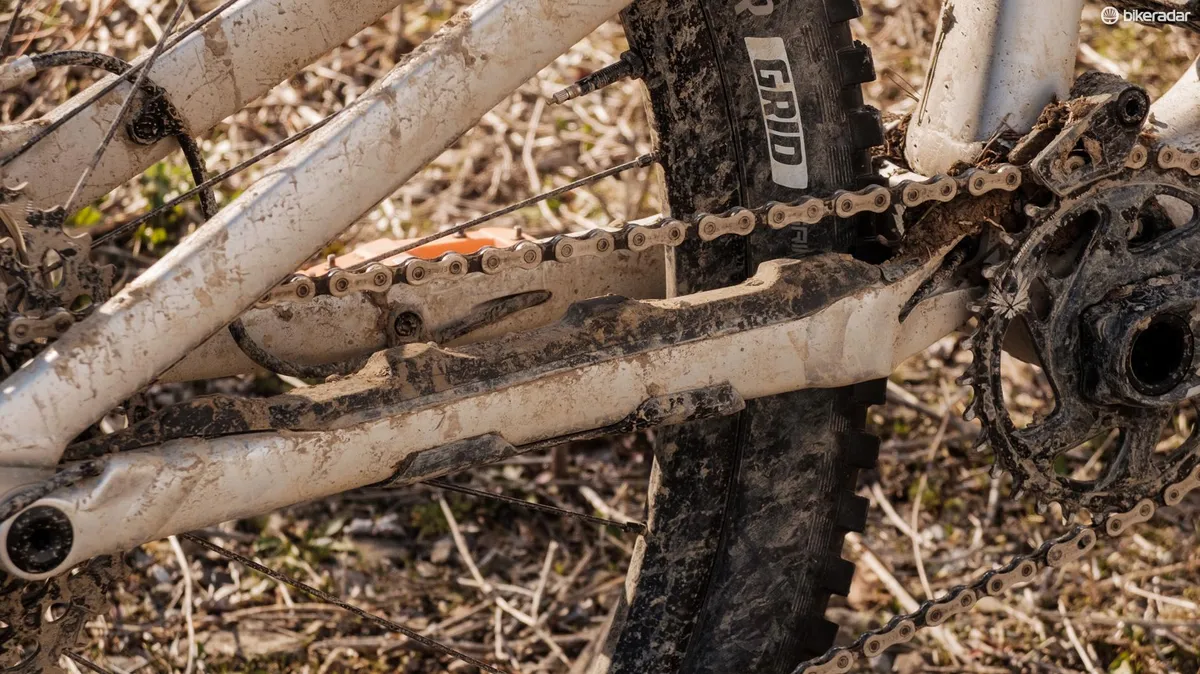
How about the builds for the Stumpjumper EVO?
The bike is available in either 27.5- or 29-inch wheel formats and is currently available in a Comp level build (£3,250 / $3,600 / AU$5,500) or as a frameset (pricing TBC).
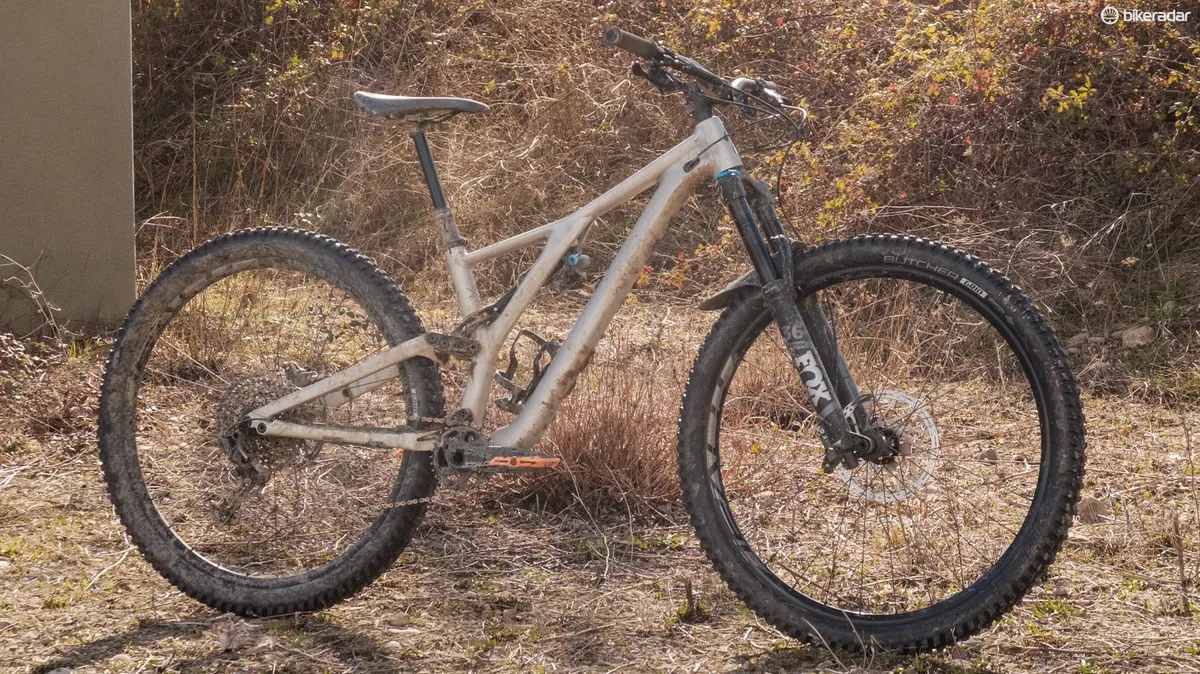
The bike is available in black or the handsome brushed-alloy finish pictured.
Specialized deserves a pat on the back for its restrained approach to design on the Stumpjumper EVO. I’m all for lairy paint jobs, but the minimal logos matched with the polished alloy is a very fine looking combination indeed.
There are no plans to make a carbon version of the EVO at the moment, but Specialized didn’t rule out the possibility.
Hasn’t there been a Stumpjumper EVO before?
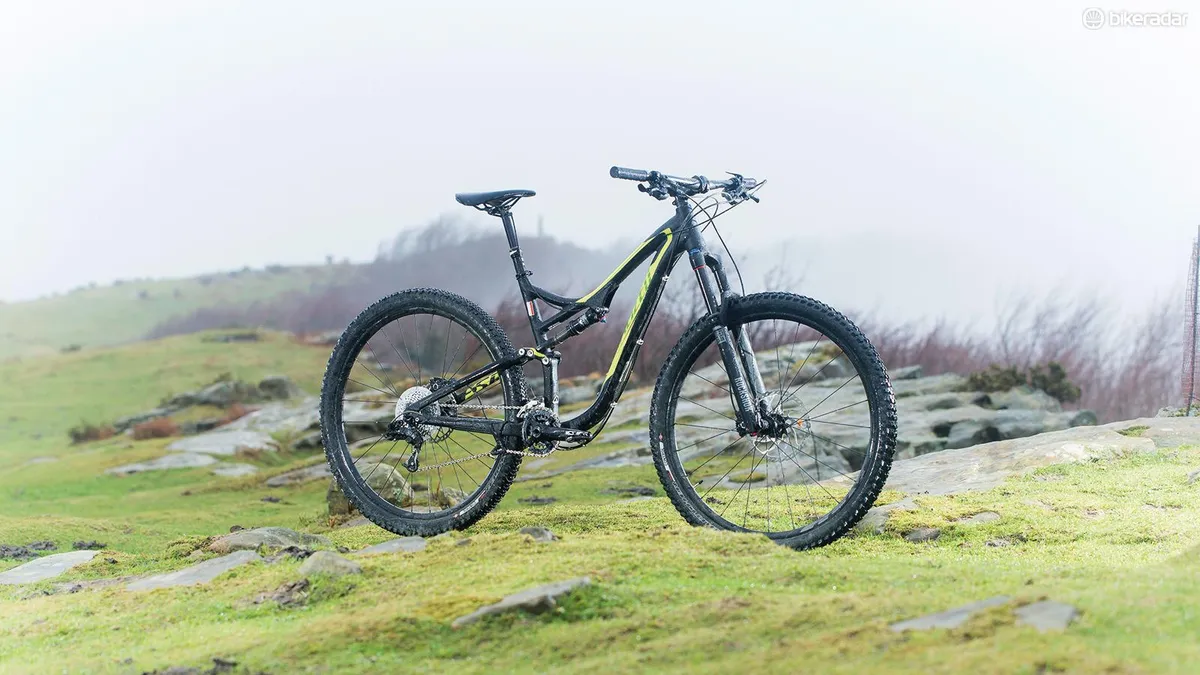
An EVO version of the Stumpjumper was last seen in the Specialized lineup way back in 2015. That bike followed much the same formula as the new EVO, slacking out the front end matched with an overall burlier build.
It’s funny to look back at that bike now, which at the time was billed as an aggressive trail bike and compare it with today’s Stumpjumper. With its 68-degree head angle, 90mm stem and skinny 32mm stanchion forks, it’s a bike that’s closer to today’s extreme XC bikes than anything else.
Specialized Stumpjumper EVO — first ride impressions
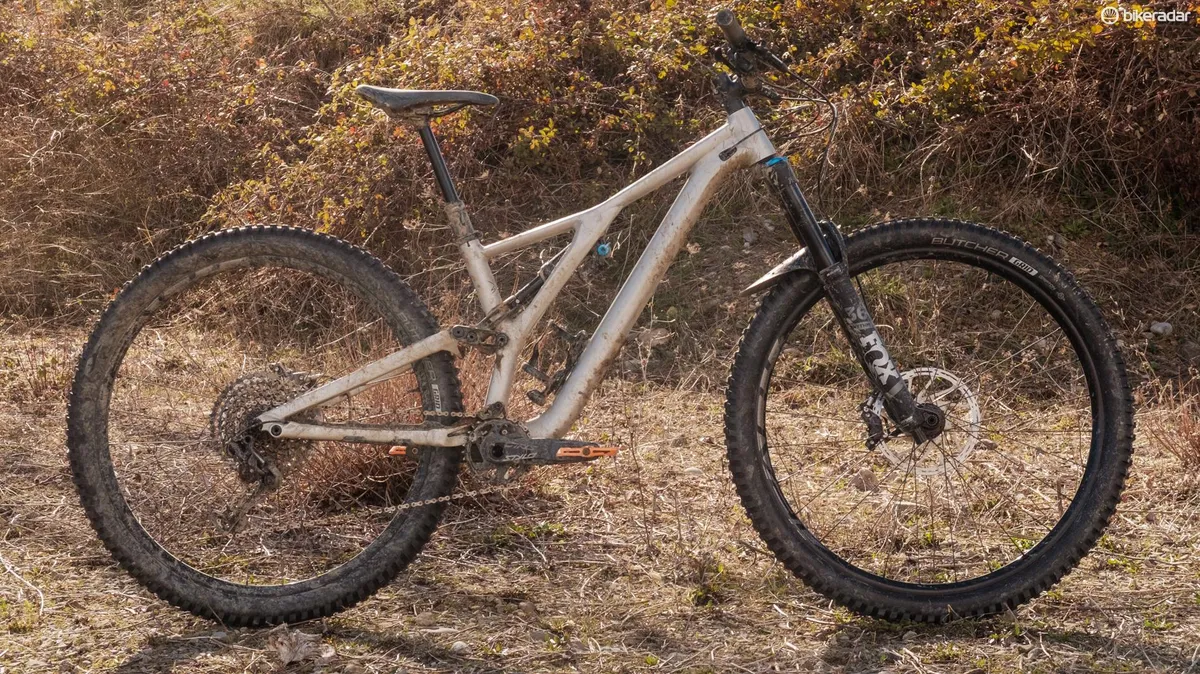
The day I had the chance to ride the EVO was spent shuttling in one area, allowing me to easily swap bikes and compare the EVO to the 29” long travel version of the Stumpjumper that I’d been riding for the past two days.
Unfortunately, a 29er version of the EVO wasn’t available in an S3 size. As such, I was on the 27.5" bike for my test run.
The Stumpjumper EVO feels incredibly planted and considerably faster in rough terrain than the regular bike.
At 324mm on the 27.5" version of the bike (328mm on the 29” version), the bottom bracket height on the EVO is incredibly low, which likely will have contributed to this planted feel.
The extra reach (490mm on a 27.5" S3 frame) on the EVO gives you plenty of room to move about and weight the front wheel without fear of going over the bars.
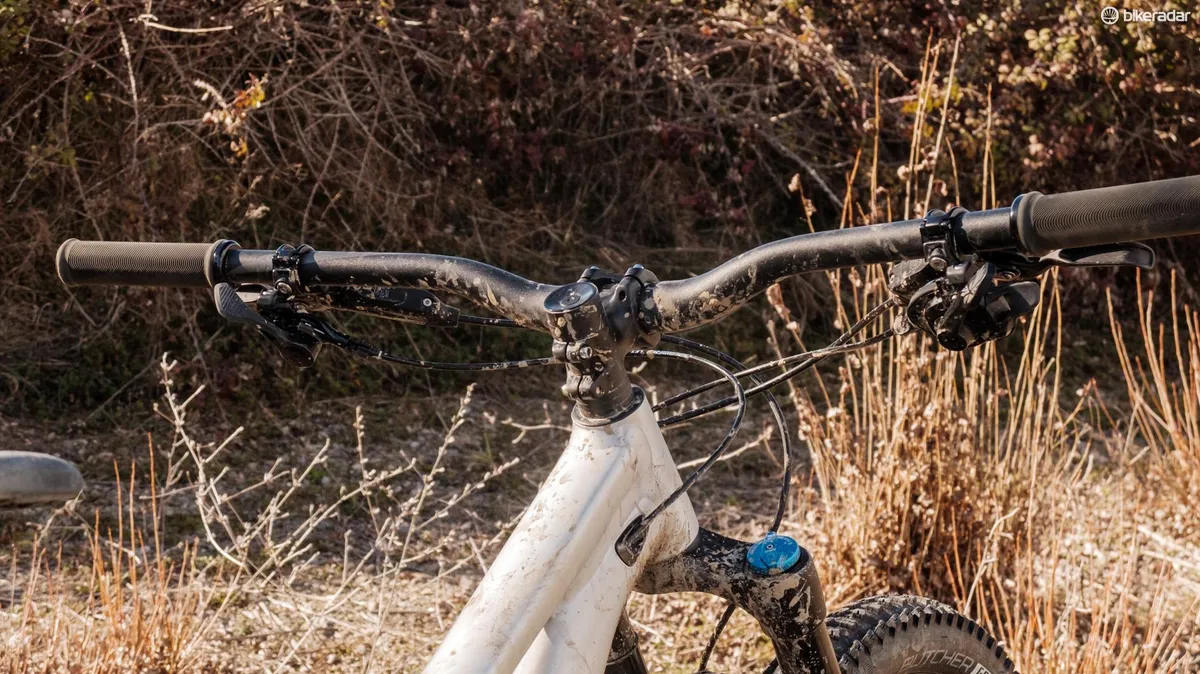
The stack is a touch lower than the Stumpjumper (641mm in a size large) at 610mm on a 27.5" S3 frame. This also makes it easier to weight the front end in corners.
The bike is built around 170mm cranks and with good technique, pedal strike isn’t much of an issue, but I still would have preferred to have seen 165mm cranks spec'd on the bike — they make next to no difference to power output, and the added ground clearance is a worthy tradeoff.
A particularly memorable part of the trail we were riding featured a long and very rough, steep-ish straight section followed by a near 90-degree corner that forced you to pretty much come to a stop to get around it. I found myself nearly over-shooting this corner as I was carrying much more speed over the rough ground on the EVO compared to the Stumpjumper.
This is, of course, a fairly anecdotal example, but still highlights the sort of terrain that the EVO excels in.
Climbing on the EVO isn’t as bad as you might imagine — the slack front end is matched with a steep-ish 75.6-degree seat tube angle, which puts you in a good position when climbing. However, the super low bottom bracket does mean that pedal strike can be an issue on steppy technical climbs.
I’ve only spent a very short amount of time on the EVO, so I’m reluctant to draw too many conclusions. However, if I had to summarise the ride of the bike, I would describe it as less involved, more confident and calmer than the regular Stumpjumper.
It’s a bike that won’t be to everyone’s tastes, and it definitely demands a different riding technique to get the most out of it, but for those who value out-and-out speed and a rowdy yet confidence-inspiring — heck, flattering — ride, this will be the Stumpjumper for you.

